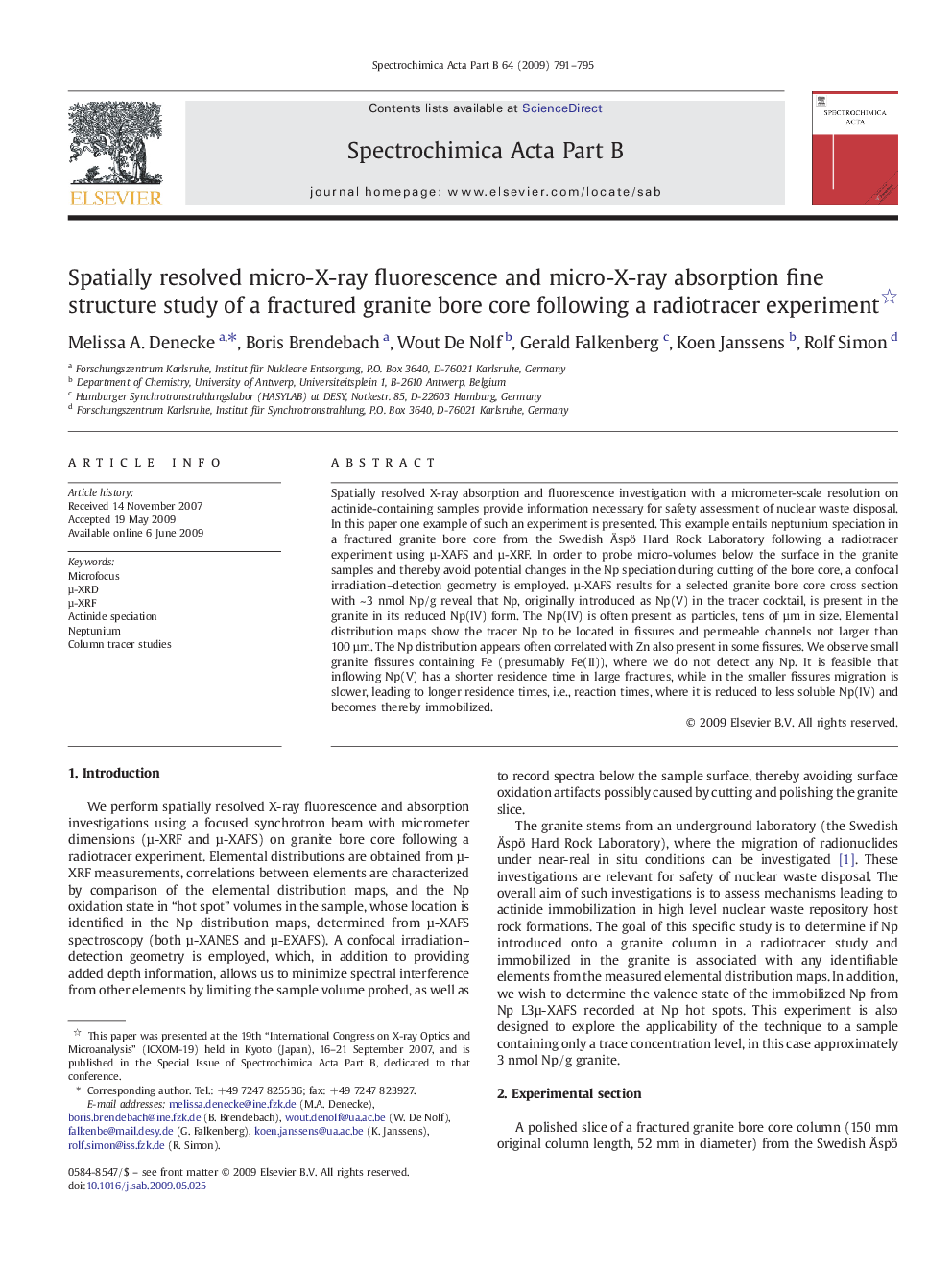| Article ID | Journal | Published Year | Pages | File Type |
|---|---|---|---|---|
| 1240882 | Spectrochimica Acta Part B: Atomic Spectroscopy | 2009 | 5 Pages |
Spatially resolved X-ray absorption and fluorescence investigation with a micrometer-scale resolution on actinide-containing samples provide information necessary for safety assessment of nuclear waste disposal. In this paper one example of such an experiment is presented. This example entails neptunium speciation in a fractured granite bore core from the Swedish Äspö Hard Rock Laboratory following a radiotracer experiment using µ-XAFS and µ-XRF. In order to probe micro-volumes below the surface in the granite samples and thereby avoid potential changes in the Np speciation during cutting of the bore core, a confocal irradiation–detection geometry is employed. µ-XAFS results for a selected granite bore core cross section with ~ 3 nmol Np/g reveal that Np, originally introduced as Np(V) in the tracer cocktail, is present in the granite in its reduced Np(IV) form. The Np(IV) is often present as particles, tens of µm in size. Elemental distribution maps show the tracer Np to be located in fissures and permeable channels not larger than 100 µm. The Np distribution appears often correlated with Zn also present in some fissures. We observe small granite fissures containing Fe (presumably Fe(II)), where we do not detect any Np. It is feasible that inflowing Np(V) has a shorter residence time in large fractures, while in the smaller fissures migration is slower, leading to longer residence times, i.e., reaction times, where it is reduced to less soluble Np(IV) and becomes thereby immobilized.
